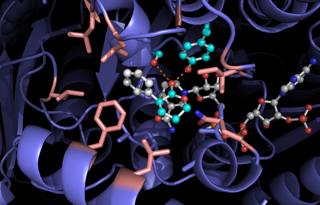COURSE OBJECTIVES:
This course is designed to gain an understanding the physico-chemical properties of inorganic and organic compounds.
COURSE OUTCOMES:
Students will be able to
CO1: Correlate the chemistry of rare earth metals and their corresponding compounds with their electronic configuration
CO2: Know the nomenclature of coordination compounds and their different structural aspects.
CO3: Have a knowledge about structure and bonding issues to understand the stability and reactivity of simple organometallic complexes
CO4: Explain the chemical properties of carboxylic acids and their derivatives, amines, nitro hydrocarbons, cyanides and isocyanides
CO5: Synthesize organic compounds, which are of relevance to multistep organic synthesis in the industry.
CO6: Formulate the first law of thermodynamics for a closed systems and arrange the change in energy in these systems via heat and work transfer
CO7: Analyze energy changes in chemical reaction using first law of thermodynamics
CO8: Assess thermodynamic applications using second law of thermodynamics
CO9: State the thermodynamic criteria for different phases in equilibrium in terms of chemical potential
CO10: Interpret the slope of phase boundaries on a pressure-temperature phase diagram in terms of the relevant changes in entropy and molar volume for the given phase change.

- Teacher: Dr. SATABDI ROY
Objective of Course
The main objective of this course is to help the students attain the basic knowledge on energy transformations in biological systems as well the key role played by enzymes in metabolisms. To prepare students work confidently on enzyme systems by integrating practical aspects with theory.
Learning Outcomes :
On completion of the course the student will be able to do the followingCO1. Student will be able to understand how these biomolecules (which they studied in the previous year) will be able to give energy for the systems.
CO2. Understand the first and second laws of thermodynamics and how they impact evolutionary trends.
C03. Attain knowledge on biomolecular interactions.
CO4. Understand the roles of ATP and reduced cofactors in shuttling energy and electrons around within cells.
CO5. Knowing about enzymes and their mode of actions will help in better understanding of metabolisms.
CO6. Learning the basics aids in better handling of enzymes in vitro.
CO7. Will be able to plan and execute an enzyme assay.
CO8. As assaying of enzymes is key in drug discovery and clinical identifications, student will be able to understand or assess the metabolic disorders

- Teacher: Dr. PRATHYUSHA YAMARTHI
Immunological Techniques explains the basics of immunology
with their applications in the usage of antibody-antigen reactions such as
precipitation, agglutination, immune and radial diffusion. It also explains
various techniques commonly used in the medical field such as western blotting,
ELISA, RIA, immunohistochemistry, etc. The cellular assays using the
principles, various methodology and their applications in the medical field has helped
various physicians and scientists to understand the reaction as well as the mode of
treatment.

- Teacher: Dr. SRINATH NAGANATHAN
Molecular biology explains about the molecular
activity in biological species relating to the bio-molecular interactions in
the cell including the interactions between the DNA, RNA, protein and
biosynthesis as well as the regulation of these interactions. The r-DNA
technology is the recombinant DNA technology used as the application tool in
various agricultural as well as medicinal benefits by identifying and altering
the genes with the help of various enzymatic and recombinant tools.

- Teacher: Dr. SRINATH NAGANATHAN
